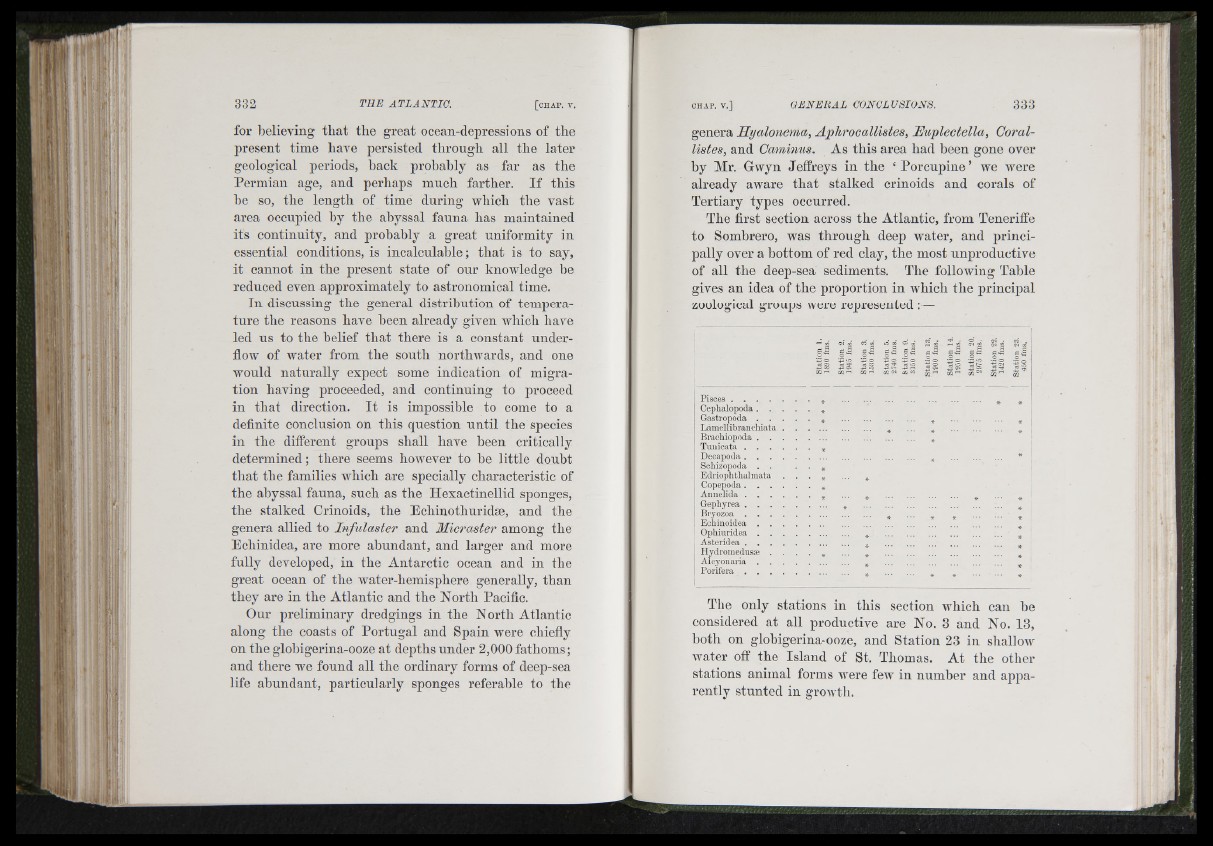
■’‘ 3#*' lii
m M o '
■■
m t Ik I»
iiliG
T-71
, B ‘4
for believing tbat the great ocean-depressions of the
present time have persisted through all tbe later
geological periods, back probably as far as tbe
Permian age, and perbaps much farther. I f this
be so, tbe length of time during which the vast
area occupied by the abyssal fauna has maintained
its continuity, and probably a great uniformity in
essential conditions, is incalculable; that is to say,
it cannot in the present state of our knowledge be
reduced even approximately to astronomical time.
In discussing the general distribution of temperature
tbe reasons have been already given which have
led us to the belief that there is a constant underflow
of water from the south northwards, and one
would naturally expect some indication of migration
having proceeded, and continuing to proceed
in that direction. It is impossible to come to a
definite conclusion on this question until the species
in the different groups shall have heen critically
determined; there seems however to he little doubt
tliat tbe families wbicb are specially characteristic of
the abyssal fauna, such as the Hexactinellid sponges,
the stalked Crinoids, the Echinothuridge, and the
genera allied to Infulaster and Micraster among the
Echinidea, are more ahundant, and larger and more
fully developed, in the Antarctic ocean and in the
great ocean of the water-hemisphere generally, than
they are in the Atlantic and the North Pacific.
Our preliminary dredgings in the N orth Atlantic
along the coasts of Portugal and Spain were chiefly
on the glohigerina-ooze at depths under 2,000 fathoms;
and there we found all the ordinary forms of deep-sea
life ahundant, particularly sponges referable to the
genera Hyalonema, Aphrocallistes, Euplectella, Coral-
listes, and Caminus. As this area had been gone over
by Mr. Gwyn Jeffreys in the ‘ Porcupine ’ we were
already aware that stalked crinoids and corals of
Tertiary types occurred.
The first section across the Atlantic, from Teneriffe
to Sombrero, was through deep water, and principally
over a bottom of red clay, the most unproductive
of all the deep-sea sediments. The following Table
gives an idea of the proportion in which the principal
zoological groups were represented ; —
II il t i i i i i i s i i i i ÍJ Si ri is |8 a t- qj f-H 0 >
Pisces . . . .
Cephalopoda . .
Gastropoda . .
Lamellibranchiata
Brachiopoda . .
Tuiiicata . . .
Decapoda . . .
Schizopoda
Edriophthalmata
CopepoJa.
Annelida .
Gephyrea . . .
Bryozoa . . .
Echinoidea
Ophiuridea .
Asteridea . . .
HydromedusEe .
Alcyonaria
Porifera . . .
* *
* *
Tbe only stations in tbis section wbicb can be
considered at all productive are No. 3 and No. 13,
botb on globigerina-ooze, and Station 23 in shallow
Avater off tbe Island of St. Thomas. At the other
stations animal forms Avere foAV in number and apparently
stunted in groAA’th.